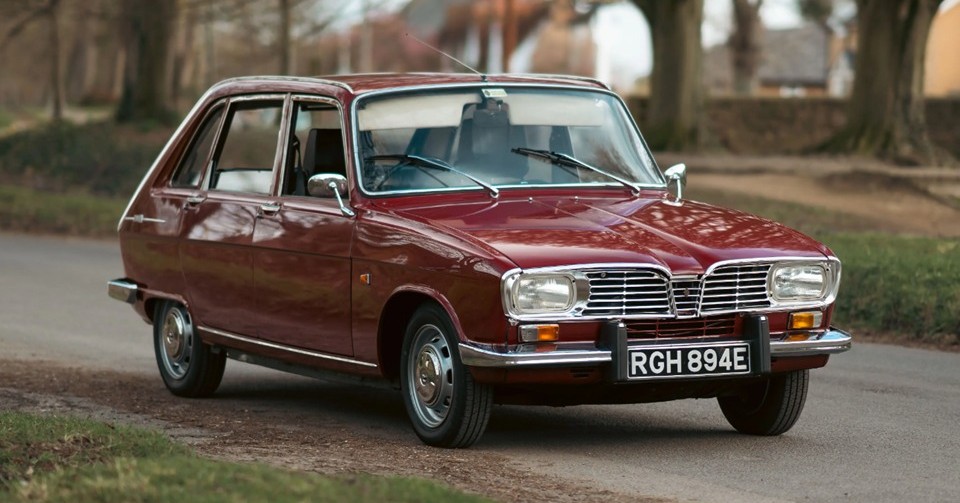The 1967 Renault 16 stands as a landmark in automotive history, marking Renault’s successful venture into the family car segment with a revolutionary approach. This iconic vehicle combines practicality, innovation, and advanced engineering, making it a significant model in the evolution of modern cars.
Technical Specifications
- Engine: The 1967 Renault 16 is equipped with a 1.6-liter inline-four engine that produces a respectable 65 brake horsepower (BHP). This engine offers a balanced mix of power and efficiency, making it ideal for a family-oriented vehicle.
- Transmission: A smooth 4-speed manual transmission ensures an engaging yet comfortable driving experience. The gearing is well-suited for both city commutes and longer highway drives.
- Layout: The Renault 16 features a front-engine, front-wheel-drive layout, enhancing interior space and handling, a pioneering configuration at the time.
- Suspension: Its advanced independent suspension on all four wheels provides a smooth ride and excellent handling over varying road conditions.
- Brakes: Fitted with reliable drum brakes at the rear and front, the Renault 16 prioritizes safety and durability.
Design and Innovation
One of the standout aspects of the Renault 16 is its unique hatchback design. This was a groundbreaking feature for its time, offering an unprecedented level of versatility and practicality. With a spacious interior and configurable rear seats, the car provided ample cargo space, making it perfect for families.
- Styling: The Renault 16 blended elegance with functionality. Its smooth lines, slightly sloping rear, and distinctive grille gave it a modern and approachable look.
- Interior: Comfort was a priority, with ergonomic seats, a well-laid-out dashboard, and thoughtful touches such as an efficient heating system and ample storage compartments.
Context of Creation
Introduced during a period of automotive transformation in the 1960s, the Renault 16 emerged as a response to the growing demand for practical family cars that didn’t compromise on style or performance. Renault aimed to provide a vehicle that could adapt to the varied needs of European families.
- Pioneering Hatchback: The Renault 16 is widely regarded as the first mass-produced hatchback, a design that would go on to dominate the compact and family car segments worldwide.
- Market Positioning: Positioned as a versatile and affordable family car, it successfully bridged the gap between utilitarian vehicles and stylish sedans.
- Impact: Its innovative design influenced the development of future hatchbacks and set a new standard for functionality in the automotive industry.
Performance and Driving Experience
The Renault 16 was praised for its nimble handling and smooth ride quality. The front-wheel-drive layout, combined with the car’s lightweight structure, ensured responsive steering and stability on various terrains.
- City Driving: The compact dimensions and agile handling made it a joy to drive in urban settings.
- Long Journeys: Its robust engine and comfortable suspension system provided a relaxing experience for extended drives.
Cultural and Historical Significance
The Renault 16 not only transformed the family car landscape but also symbolized the innovation and forward-thinking spirit of the 1960s. Its success in both domestic and international markets cemented Renault’s reputation as a leader in practical automotive design.
- Awards: It was crowned European Car of the Year in 1966, a testament to its groundbreaking design and engineering excellence.
- Legacy: The Renault 16 paved the way for other iconic hatchbacks and remains a cherished classic among car enthusiasts.
Additional Features
- Fuel Efficiency: The Renault 16 was known for its economic fuel consumption, appealing to budget-conscious buyers.
- Durability: Built with high-quality materials and robust engineering, the car proved reliable over time.
- Customization: Buyers could choose from various trims and optional features, enhancing its appeal across different demographics.
Conclusion
The 1967 Renault 16 is more than just a car—it’s a milestone in automotive history. Its blend of innovation, practicality, and elegance redefined the family car, setting a benchmark for future generations of vehicles. Whether admired for its engineering ingenuity or cherished for its nostalgic charm, the Renault 16 continues to captivate automotive enthusiasts worldwide.

